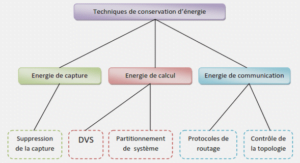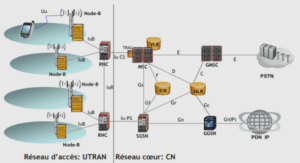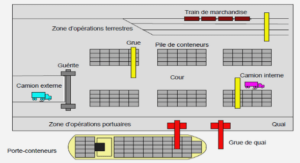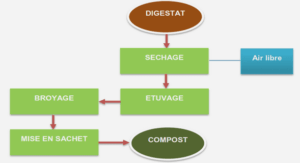Humanity is in continuous demand of energy. Since the dawn of time, the tribes have initiated wars to possess energy (fire). They improved their weapons by heating iron and progressed in development. Today the form of energy changed to oil, gas, and electricity. Thus, earth is in constValues of the eant threat of pollution mainly originated from energy production. Humanity has organized many events to fight against climate change, we enumerate: The Kyoto Protocol (1997), The Copenhagen Summit (2009), COP 21 (Conference Of the Parties) (2015). Other action plans have been initiated to encourage and force the penetration of renewable energy sources, we enumerate: the Russian Renewable Energy Program (2000), the 25x’25: US resolution for a new national renewable energy goal (2004), the 20- 20-20 European Union climate and energy package (2008), and the Zero Carbon Australia Stationary Energy Plan (2010).
Leaders have three main challenges to accomplish: Energy Security, Social Equity, and Environmental Impact Mitigation. PV (Photovoltaic) panels present a serious solution to these challenges. We can list here a number of advantages of using the PV technology:
• Solar energy is the most abundant and equitable source on earth.
• PV panels constitute a green energy source that does not pollute or contribute to climate change.
• PV panels can support electricity to rural places.
• We must note that the third of earth’s population does not have access to the electric grid.
• Electricity is the most convertible form of power.
• PV panels are safe and reliable.
• PV panels can be produced from scrap materials of electric industry.
• With automated and intelligent systems, no operators are needed.
• Once installed, no operating cost is required.
• No parts move during PV panel operation.
• PV panels can be integrated in any new or existing building.
Despite these advantages, we must note some disadvantages that limit the development of the PV market:
• The output of PV panels is directly linked to the meteorological conditions of the area.
• The installation cost is high relatively to traditional power generation.
• PV panel’s lifetime is small relatively to traditional power generation sources.
• The BOS (Balance Of System) (storage, inverter, DC (Direct Current) to AC (Alternating Current) converter) decreases the reliability and the efficiency of the system.
• PV panel’s production is complex and expensive. A PV panel needs at least two years of operation to generate the power used during its fabrication.
The most flagrant disadvantage of PV panels is their initial high cost that leads to a high energy production cost, that is a high kWh cost. The NAE (National Academy of Engineering) defined 14 grand challenges for engineering, for the 21st century. One of these challenges is to “Make Solar Energy Economical” [10]. Besides, the 20-20 20 European Union climate and energy package suggests to increase the lifespan of the photovoltaic panels up to 40 years [11]. Our PhD research aligns with the above two recommendations. Our objective is to increase the lifespan of PV panels by monitoring and control. One of the main objectives of the SASV (Systèmes Automatisés à Structure Variable) project team of the LSIS (Laboratoire des Science de l’Information et des Systèmes) laboratory is the exploitation of ICT (Information and Communications Technology) for control, prediction, maintenance, diagnosis, and management of RES (Renewable Energy Sources). SASV became interested in control applied to RES, systems of energy production, mixed RES, and the coupling of several HyRES (Hybrid Renewable Energy Sources). The SASV project team has many collaboration in this area through its involvement in the RMEI (Réseau Méditerranéen des Ecoles d’Ingénieurs).
General information on Photovoltaic Panels
History
It was Alexandre-Edmond Becquerel who discovered the photovoltaic effect in 1839. The photovoltaic effect is the phenomena of producing electricity from a semiconductor when it is exposed to light. The photovoltaic effect was applied to Se (Selenium). The first PV panel with 6% efficiency was developed by Chapin, Pearson, and Prince in 1954. NASA (National Aeronautics and Space Administration) started using PV panels to power up satellites in 1958. Many countries started developing PV systems because of the oil crisis in 1973. Then PV technology started to grow from 1MW power plant (1982) to 6MW power plant (1984). The total peak power installed in 1999 reached 1000MW, this power doubled by 2002. Now the total worldwide installed PV panel’s power exceeds 100GWp [2].
Principle of operation
A conductor is a material possessing a high number of free electrons; it conducts the electrical current. An electric insulator has no free electrons; it blocks current from flowing. A semiconductor is a body having a resistivity intermediate between that of the conductor and the insulator. A semiconductor possesses electrons situated in the valence band (the farthest layer from the nucleus). These electrons are called valence electrons. If these electrons acquire some energy which exceeds the band gap energy, they become free to navigate in the conduction band. Thus the resistivity of the semiconductor decreases. Heat and light are two examples of energy sources that extract electrons from the valence band. Photons, particles of light, hit valence electrons and carry them to conduction band. The built in voltage drive electrons to the external circuit. If an electron is freed by a photon carrying energy more than the band gap energy, the electron can do some useful work in an external electric circuit.
The recombination
If a process (e.g. light) applied on a semiconductor continuously generates electron-hole pairs, the resistivity of the latter semiconductor must theoretically decrease to zero. However, in reality, a phenomenon called recombination will cease this resistive decrease. The recombination is the inverse of electron-hole pair generation. We define exciton, the excited electron (present in the conduction band) and the corresponding hole (present in the valence band) that attract each other. The destruction of the exciton or the electron-hole joint is called recombination. The phenomenon of recombination can generate a photon or a phonon [2, 17]. The most important three recombination mechanisms are: The radiative recombination: it is also called band to band recombination, when an electron, in the conduction band, falls back to its place in the valence band and generates a photon. The recombination through traps in the forbidden gap: when we have impurities in the crystal, an electron can be captured by an impurity. The energy of the electron may be in the forbidden band gap. Then the hole is attracted to the level of the electron and the electron reaches the valence band. The Auger recombination: it is similar to the radiative recombination. However, in the Auger recombination, the excited electron and the excited hole release energy to phonons before recombination. For a semiconductor, we define n: number of free electrons, p: number of holes, and ni=n=p for intrinsic semiconductors. The recombination rate is proportional to the product of n and p (n × p). In intrinsic semiconductors it is proportional to n2 i . At equilibrium the generation rate of electron hole pairs must be equal to the recombination rate. For a silicon intrinsic crystal, at 25°C, n = p = ni = 1, 5 × 10¹⁰particle.cm−3. The recombination rate for doped semiconductors is proportional for pn*ND for n-type semiconductors, where ND is the number of donors and pn is the number of holes per unit volume in the n-type semiconductor. And similarly, the recombination rate is proportional to NA*np for p-type semiconductors, where NA is the number of acceptors and np is the number of electrons per unit volume in an p type semiconductor. We define surface recombination by electronhole recombination at edges of the semiconductor. Surface recombination decreases the short circuit current (ISC) (by increasing the dark current) and the open circuit (OC) voltage (VOC). In fact at the edges of the semiconductor, the silicon crystal is discontinued creating energy levels in the band gap. These intermediate energy levels are called surface states. The SRV (Surface Recombination Velocity) defines the surface recombination rate (∼= 10⁶cm.s−1). In order to decrease the SRV, many chemical approaches can be undertaken. A BSF (Back Surface Field) is mounted on the back contact. It is a heavily doped p-type silicon layer. The BSF will generate an electric field that repulses electrons from accessing the back contact and thus minimizing the SRV at the back surface. In the front surface, under the metallic grid, a layer of heavily doped n-type layer is added. It decreases the SRV at the front surface. For exposed silicon surface, the discontinuation of silicon is rearranged by adding a layer of SiOx.
The PN junction
As seen before, doping of a semiconductor increases its conductivity and creates two electrical types of the latter semiconductor P and N. If we juxtapose the P and N layers of the semiconductor, we form a PN junction. The PN junction is one crystal having a difference of holes and electrons concentration between the P type and the N type. This causes electrons to diffuse to the p-type region and holes to diffuse to the n-type region. The diffusion will cease because electrons and holes are charged particles (they will produce an electrostatic potential difference). In reality, the diffusion current and the drift current will cancel each other’s and no net current will be noted. The region where charged particles diffuse is called the depletion region. Assuming that the axis x=0 represents the border of the p-type and n-type regions, the depletion region is defined from –xN to xP. Its thickness is inversely proportional to the number of donors ND in the p-region and inversely proportional to the number of acceptors NA in the n-region. In fact we must maintain an electric neutrality in the region ND*xN=NA*xP.
|
Table des matières
General Introduction
Context
Arguments defending our work
Objectives and Organization
List of Publications
1 General information on Photovoltaic Panels
1.1 Introduction
1.2 History
1.3 Principle of operation
1.3.1 Semiconductors
1.3.1.1 Direct and indirect band gap semiconductor
1.3.1.2 Fermi energy
1.3.1.3 Doping
1.3.1.4 Photovoltaic Effect
1.3.1.5 The recombination
1.3.2 The PN junction
1.4 The Solar Cell
1.4.1 Electron-hole pair generation
1.4.2 Equivalent circuit of a PV cell
1.4.3 The I-V characteristic
1.4.4 Efficiency limits
1.5 Installation and Sizing
1.6 Types of PV panels
1.6.1 Silicon based PV Panels
1.6.1.1 Silicon crystals
1.6.1.2 Wafer silicon cells
1.6.1.3 Thin film Si cells
1.6.1.4 Amorphous silicon cells
1.6.2 Multi-junction GaInP/GaAs/Ge cells
1.6.3 Cu(InGa)Se2 cells
1.6.4 CdTe cells
1.6.5 Dye-sensitized cells
1.6.6 Organic cells
1.7 Maximum Power Point Tracking
1.7.1 Problem statement
1.7.1.1 DC/DC converter
1.7.2 MPPT algorithms
1.7.2.1 Open-loop algorithms
1.7.2.2 Closed-loop algorithms
1.7.3 Comparison of MPPT algorithms
1.7.3.1 Qualitative comparison
1.7.3.2 Quantitative comparison
1.7.3.3 Comparison summary
1.8 Conclusion
2 Degradation and faults in PV panels
2.1 Introduction
2.2 Degradation Modes of PV panels
2.2.1 Potential Induced Degradation
2.2.1.1 PID causes
2.2.2 Light Induced Degradation
2.2.2.1 LID in c-Si cells
2.2.2.2 LID in a-Si:H cells
2.2.3 Ultraviolet light Degradation
2.2.3.1 UV Degradation mechanism
2.2.4 Moisture Induced Degradation
2.2.5 Cell Cracks
2.2.6 Salt mist and ammonia degradation
2.3 Faults of PV panels
2.3.1 Interconnect failure and connection faults
2.3.2 Bridge fault, earth fault
2.3.3 Development of a shunt path
2.4 Conclusion
3 Modeling of degradation and faults in PV panels
3.1 Introduction
3.2 Model of an ideal PV panel
3.2.1 Single cell modeling
3.2.2 PV panel modeling
3.2.3 Ideal model validation
3.2.3.1 Experimentation apparatus
3.2.3.2 Irradiance variation
3.2.3.3 Temperature variation
3.3 Modeling of degradation
3.3.1 Accelerated testing
3.3.1.1 Arrhenius Equation
3.3.2 PID Modeling
3.3.3 LID modeling
3.3.3.1 LID modeling in c-Si cells
3.3.3.2 LID modeling in a-Si:H cells
3.3.4 UVD modeling
3.3.5 MID modeling
3.3.6 Cells Cracks modeling
3.4 Real-time simulation model
3.4.1 Model development
3.4.2 Simulation results
3.4.2.1 Irradiance variation
3.4.2.2 Temperature variation
3.4.3 Real-time model validation
3.5 Modeling of faults
3.5.1 Model development
3.5.1.1 Modeling of interconnect and connection faults
3.5.1.2 Modeling of bridge and earth
3.5.1.3 Modeling of shunt path
3.5.2 Faults model validation
3.5.2.1 Validation of interconnect and connection faults model
3.5.2.2 Validation of shunt path fault model
3.5.2.3 Validation of the bridge and earth fault model
3.6 Conclusion
General Conclusion
![]() Télécharger le rapport complet
Télécharger le rapport complet






